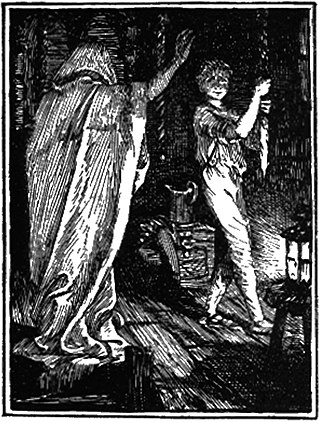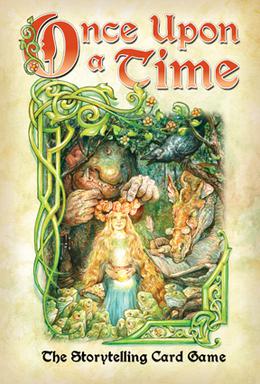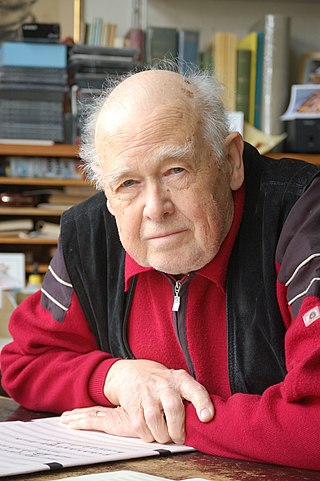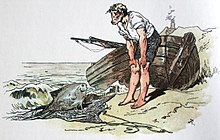
A fairy tale is a short story that belongs to the folklore genre. Such stories typically feature magic, enchantments, and mythical or fanciful beings. In most cultures, there is no clear line separating myth from folk or fairy tale; all these together form the literature of preliterate societies. Fairy tales may be distinguished from other folk narratives such as legends and explicit moral tales, including beast fables. Prevalent elements include dragons, dwarfs, elves, fairies, giants, gnomes, goblins, griffins, merfolk, monsters, monarchy, pixies, talking animals, trolls, unicorns, witches, wizards, magic, and enchantments.

A legend is a genre of folklore that consists of a narrative featuring human actions, believed or perceived to have taken place in human history. Narratives in this genre may demonstrate human values, and possess certain qualities that give the tale verisimilitude. Legend, for its active and passive participants, may include miracles. Legends may be transformed over time to keep them fresh and vital.
Japanese folktales are an important cultural aspect of Japan. In commonplace usage, they signify a certain set of well-known classic tales, with a vague distinction of whether they fit the rigorous definition of "folktale" or not among various types of folklore. The admixed impostors are literate written pieces, dating back to the Muromachi period or even earlier times in the Middle Ages. These would not normally qualify for the English description "folktales".

A villain is a stock character, whether based on a historical narrative or one of literary fiction. Random House Unabridged Dictionary defines such a character as "a cruelly malicious person who is involved in or devoted to wickedness or crime; scoundrel; or a character in a play, novel, or the like, who constitutes an important evil agency in the plot". The antonym of a villain is a hero.
E Bukura e Dheut is an epithet in Albanian mythology and folklore, used in some traditions for a crafty fairy, and in other traditions for a chthonic/earth goddess, the counterpart of e Bukura e Detit and i Bukuri i Qiellit. As a goddess of the underworld and at the same time a personification of springtime, the Beauty of the Earth is evidently an epithet of the Albanian equivalent of the Ancient Greek Persephone, which is considered to be Prende, the Albanian dawn goddess, goddess of love, beauty, fertility, health, and protector of women, also referred to as Zoja e Bukuris "Goddess/Lady of Beauty".

Dark fantasy is a subgenre of fantasy literary, artistic, and cinematic works that incorporates disturbing and frightening themes. The term is ambiguously used to describe stories that combine horror elements with one or other of the standard formulas of fantasy.

"The Fisherman and His Wife" is a German fairy tale collected by the Brothers Grimm in 1812. The tale is of Aarne–Thompson type 555, about dissatisfaction and greed. It may be classified as an anti-fairy tale.

"The Story of the Youth Who Went Forth to Learn What Fear Was" or "The Story of a Boy Who Went Forth to Learn Fear" is a German folktale collected by the Brothers Grimm in Grimm's Fairy Tales. The tale was also included by Andrew Lang in The Blue Fairy Book (1889).

Once Upon a Time is a card game produced by Atlas Games in 1994 in wich the entire group of players collaborate to tell a story, each to use up all of the storytelling cards in their hand first.

"Das Märchen von der Padde" is a German folktale collected by Johann Gustav Gottlieb Büsching in Volks-Sagen, Märchen und Legenden (1812). It has been translated into English under the titles of "Puddocky" or "Cherry the Frog-Bride".
The Imp Prince is a French fairy tale written by Marie Catherine d'Aulnoy and published in her book Fairy Tales in 1697.

Fahrenheit 451 is an interactive fiction game released in 1984 based on the 1953 novel of the same name by Ray Bradbury. Originally released by software company Trillium, it was re-released in 1985 under the company's new name Telarium.

Das Märchen von der schönen Lilie, Op. 55, is an opera in two acts by Giselher Klebe, with a libretto by Lore Klebe, based on Goethe's fairy tale Das Märchen. On a commission by the SWR for the Schwetzingen Festival, it was premiered on 15 May 1969 at the Schlosstheater Schwetzingen, staged by Oscar Fritz Schuh and conducted by Hans Zender. The opera was published by Bärenreiter.
The Green Snake and the Beautiful Lily is a fairy tale by Johann Wolfgang von Goethe published in 1795 in Friedrich Schiller's German magazine Die Horen. It concludes Goethe's novella rondo Conversations of German Emigrants (1795). Das Märchen is regarded as the founding example of the genre of Kunstmärchen, or artistic fairy tale. The story revolves around the crossing and bridging of a river, which represents the divide between the outer life of the senses and the ideal aspirations of the human being.

Kurt Ranke was a German ethnologist who specialized in the study of fairy tales.
Märchen is the German diminutive of the obsolete German word Mär, meaning "news, tale". It may refer to:

A creepypasta is a horror-related legend which has been shared around the Internet. The term creepypasta has since become a catch-all term for any horror content posted onto the Internet. These entries are often brief, user-generated, paranormal stories that are intended to frighten readers. The subjects of creepypasta vary widely and can include topics such as ghosts, cryptids, murder, suicide, zombies, aliens, rituals to summon supernatural entities, haunted television shows, and video games. Creepypastas range in length from a single paragraph to extended multi-part series that can span multiple media types, some lasting for years.

"The Creation of the Violin" is a Transylvanian/South Hungarian Roma (gypsy) fairy tale.
The Red Bird is a children's book written by Astrid Lindgren.
Johannes Andreas Jolles, known as André Jolles was a Dutch-German art historian, literary critic and linguist who was affiliated with the Nazi Party. He is best known for his work Simple Forms.













